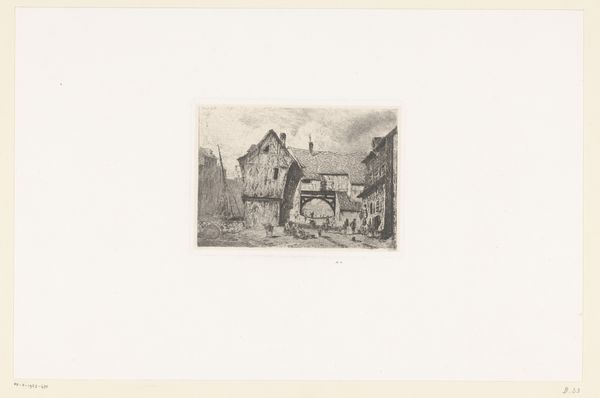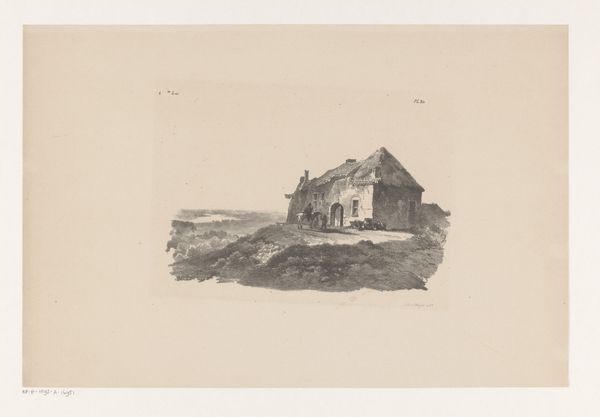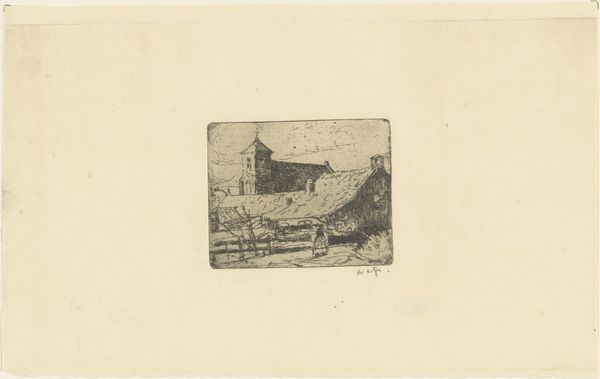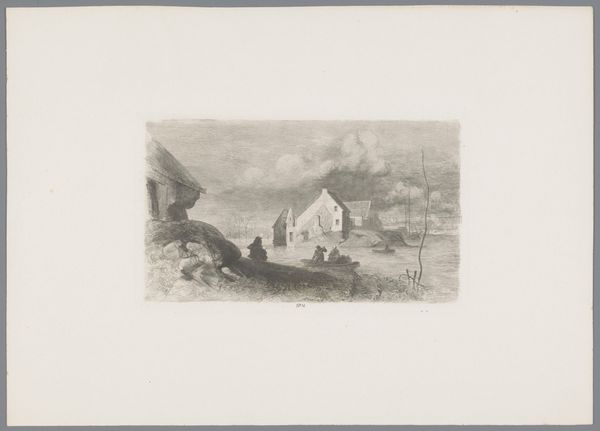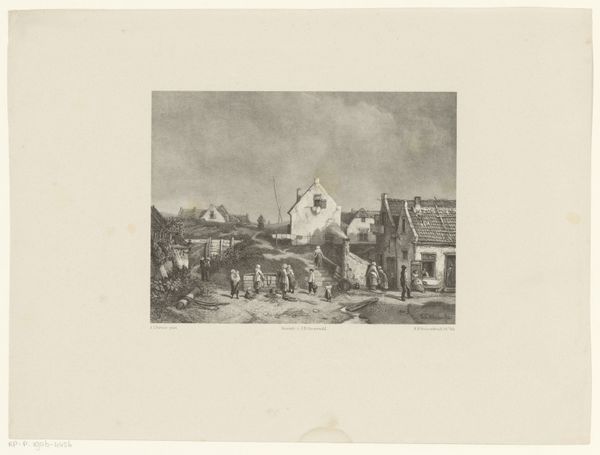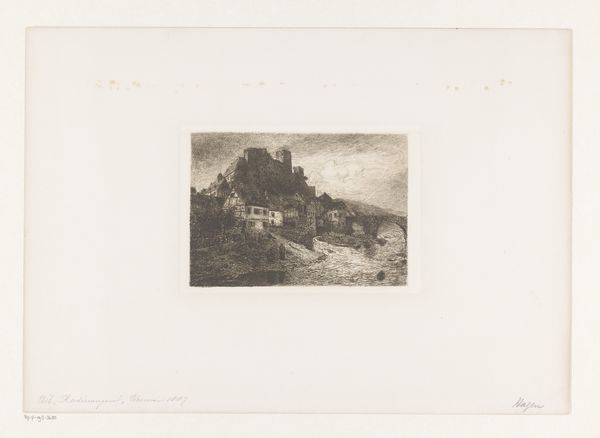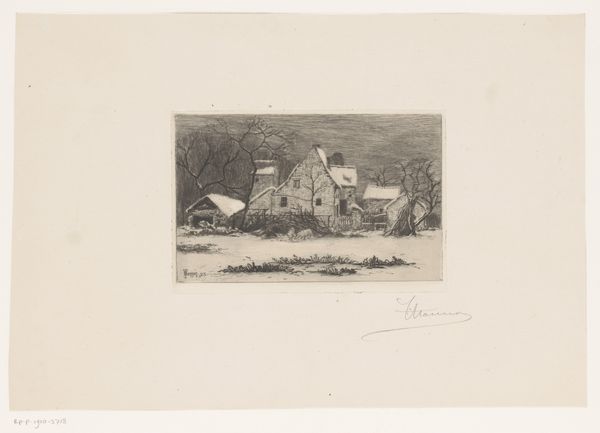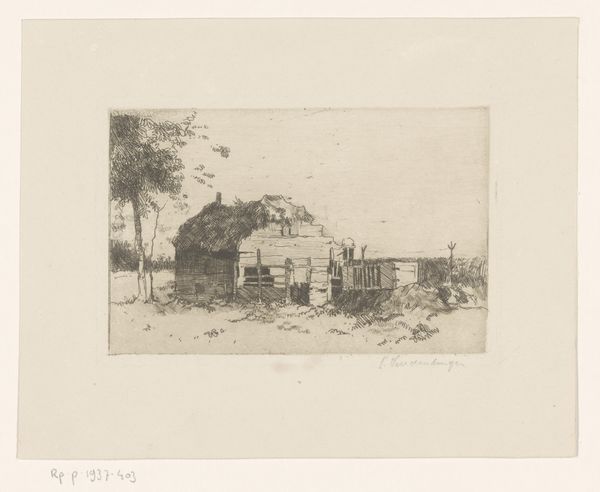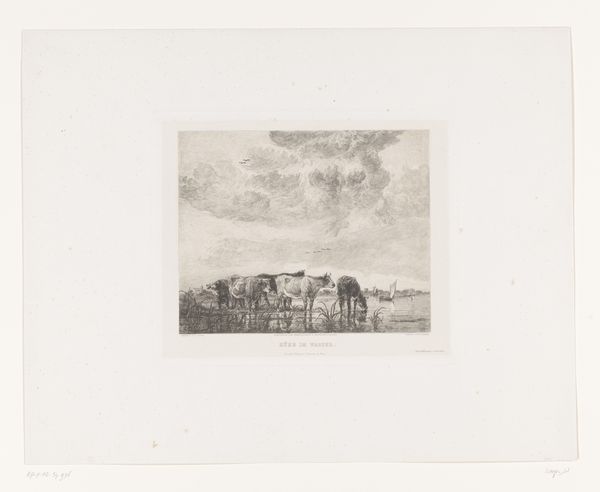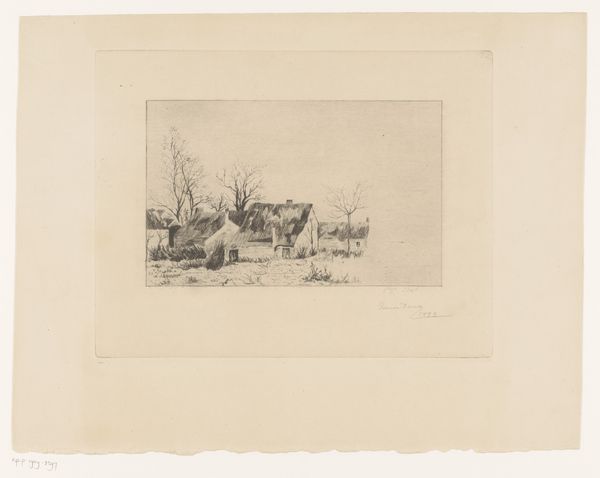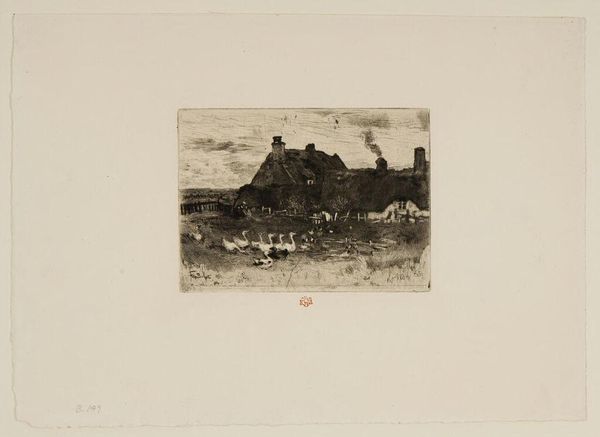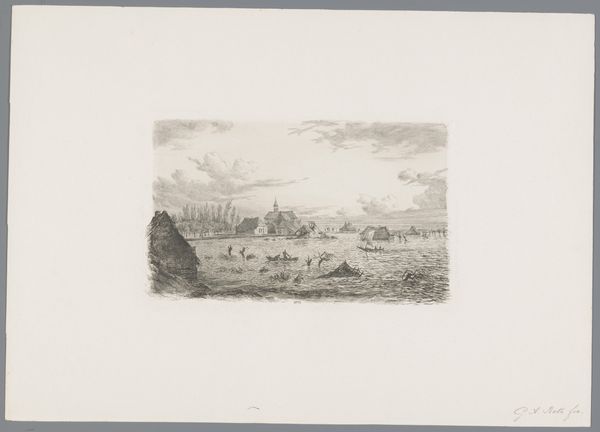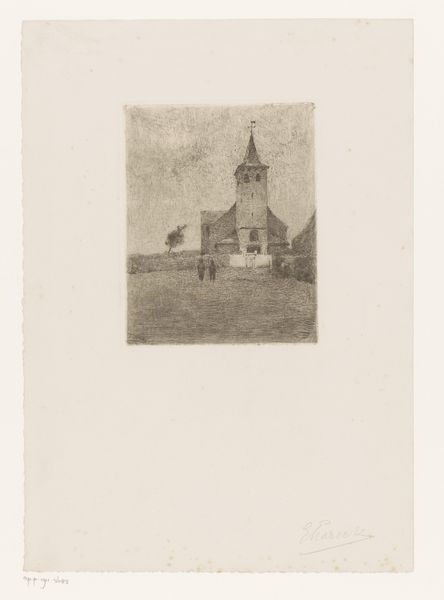
print, etching, paper
# print
#
etching
#
landscape
#
paper
#
cityscape
#
realism
Dimensions: height 120 mm, width 177 mm
Copyright: Rijks Museum: Open Domain
Editor: Here we have Willem Bastiaan Tholen’s etching on paper, "View of the Great Church, in Veere," made sometime between 1870 and 1931. It's a cityscape, rendered in soft, almost ghostly lines. What strikes me most is how quiet it feels. How do you see this artwork reflecting the culture of its time? Curator: That quietness is key. Think about the role of the church in 19th and early 20th century Dutch society. Beyond its spiritual function, it was a visual anchor, representing community stability, order, and tradition, especially in smaller towns like Veere. How might the artist be commenting on that social role, or perhaps questioning it? Editor: It's interesting you say questioning. The soft lines and muted tones almost feel like it's fading, or perhaps suggesting change? It is realist in style, but it has an airy quality to it, so I see how one could also interpret it as reflecting how things change. Curator: Exactly! Tholen's choice of etching, a printmaking technique allowing for nuanced tonality, could also be seen as democratizing the image of power. By producing multiple copies, he’s taking the image of authority out of the hands of the elite, isn't he? Does that potentially open it to wider social interpretation? Editor: That makes me think about the scale, too. It's quite small, a print meant for private viewing, almost like a souvenir. Maybe that's why it feels so personal despite depicting such a monumental structure? Curator: Precisely! It bridges public and private, the grand and the intimate. Editor: That tension makes this so much more interesting! Thanks for pointing that out. It goes beyond just being a pretty picture. I never considered the democratizing potential of the print medium itself. Curator: And I hadn't quite placed it within the context of changing social norms and private/public perception. A fruitful exchange!
Comments
No comments
Be the first to comment and join the conversation on the ultimate creative platform.
